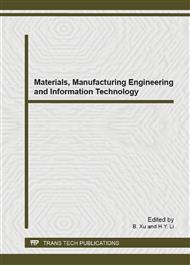p.127
p.132
p.137
p.141
p.145
p.149
p.153
p.157
p.161
Braided Bone Scaffolds Made by Braiding Polyvinyl Alcohol and Cross-Linked by Glutaraldehyde: Manufacturing Process and Structure Evaluation
Abstract:
When the bone tissues suffer from an impaired area that is greater than their self-healing size limit, the impairment may not heal or heal incompletely. With the purpose of developing artificial bone scaffolds for the recovery of bone tissues, this study twists 3-ply polyvinyl alcohol (PVA) fibers into plied yarns, which are then braided into PVA bone scaffolds using a braiding technique. Afterward, the braids are cross-linked with glutaraldehyde in order to improve their structure and their water stability. The experiment results show that a cross-linking by glutaraldehyde does not significantly influence the surface morphology of the braids. However, a cross-linking by high concentration glutaraldehyde provides the braids with a swelling phenomenon, which in turn causes a dense internal feature of the braids, and namely a lower porosity. This study successfully prepares braided PVA bone scaffolds with water stability, through a glutaraldehyde cross-linking.
Info:
Periodical:
Pages:
145-148
Citation:
Online since:
March 2014
Authors:
Price:
Сopyright:
© 2014 Trans Tech Publications Ltd. All Rights Reserved
Share:
Citation:


